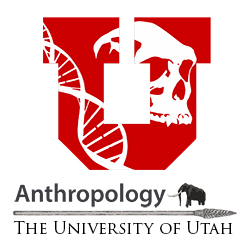Socioecological Dynamics Structuring the Spread of Farming in the North American Basin-Plateau Region
 Authors:
Authors:
Brian F. Codding, Joan Brenner Coltrain, Lisbeth Louderback, Kenneth Blake Vernon, Kate E. Magargal, Peter M. Yaworsky, Erick Robinson, Simon C. Brewer & Jerry D. Spangler
Abstract:
The spread of agriculture is a major driver of social and environmental change throughout the Holocene, yet experimental and ethnographic data indicate that farming is less profitable than foraging, so why would individuals choose to adopt agriculture leading to its expansion? Ideal distribution models offer one framework to answer this question: Individuals should adopt less profitable subsistence strategies and occupy more marginal environments when local population density increases competition to the point where the suitability of the best strategies and habitats becomes equal to what can be gained in poorer strategies and habitats. Coupling radiocarbon-dated archaeological sites with a validated measure of agricultural suitability, we evaluate the emergence of farming in the Basin-Plateau region of North America. Our results show that farming first occurs in the more suitable Colorado Plateau physiographic region, and only spreads into the less suitable Great Basin after population density on the Plateau increases. This produces an approximate 300- to 400-year lag between the onset of farming on the Plateau and in the Basin. These findings support the ideal distribution hypothesis for the spread of farming, and suggest a general socioecological process that may help explain global patterns in the timing and tempo of agricultural expansions.
This publication can be viewed here
